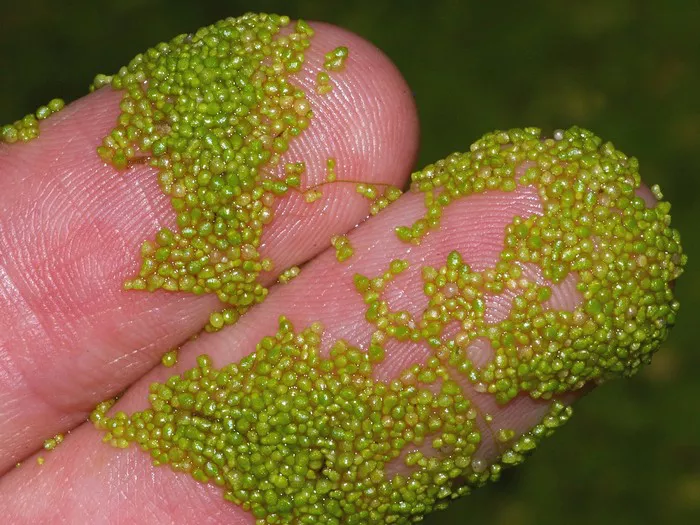In the realm of botanical wonders, size does not always dictate significance. While grandiose blooms capture attention with their flamboyant displays, it is the diminutive wonders that often hold the most intriguing secrets. Among these marvels is Wolffia globosa, renowned as the smallest flowering plant on Earth. Despite its minuscule stature, this aquatic plant packs a punch in terms of ecological importance, scientific curiosity, and potential applications. In this article, we delve into the remarkable world of Wolffia globosa, exploring its characteristics, habitat, ecological role, and the ongoing research surrounding this extraordinary botanical gem.
Characteristics of Wolffia globosa
Wolffia globosa belongs to the family Araceae, commonly known as the duckweed family. This family encompasses a diverse array of aquatic plants, ranging from larger species like the water lily to the tiny Wolffia. What sets Wolffia globosa apart is its exceptionally small size. Individual plants of Wolffia globosa typically measure between 0.5 to 1.5 millimeters in length, making them barely visible to the naked eye. Despite their diminutive size, each plant consists of a single oval-shaped leaf-like structure, known as a frond, and a root structure that dangles beneath the water’s surface.
The reproductive strategy of Wolffia globosa is equally fascinating. Unlike many flowering plants that produce showy flowers to attract pollinators, Wolffia globosa relies on a more discreet method of reproduction. It reproduces primarily through asexual budding, where daughter plants develop as tiny offshoots from the parent plant. This rapid reproduction allows Wolffia globosa to proliferate rapidly under suitable environmental conditions, forming dense colonies on the water’s surface.
Habitat and Distribution
Wolffia globosa is a cosmopolitan species, meaning it is found across a wide geographical range. It thrives in calm, freshwater environments such as ponds, lakes, marshes, and slow-moving streams. The plant prefers nutrient-rich waters, where it can readily access the essential elements needed for growth and reproduction.
One of the key adaptations of Wolffia globosa to its aquatic habitat is its ability to float effortlessly on the water’s surface. This buoyancy is facilitated by tiny air-filled spaces within the plant’s tissues, allowing it to remain suspended in the water column. Additionally, the absence of a rigid stem or extensive root system reduces the plant’s overall weight, further enhancing its floating capabilities.
Ecological Role of Wolffia globosa
Despite its unassuming appearance, Wolffia globosa plays a crucial role in aquatic ecosystems. As a primary producer, it contributes to the food web by synthesizing organic compounds through photosynthesis. This process not only provides energy for the plant itself but also supports a diverse array of organisms that rely on Wolffia globosa as a food source.
The dense mats formed by Wolffia globosa colonies serve as habitat and refuge for various aquatic organisms, including microorganisms, invertebrates, and small fish. These floating mats also help to stabilize the water’s surface, reducing erosion and providing shelter for juvenile fish and amphibians.
Moreover, Wolffia globosa exhibits phytoremediation capabilities, meaning it can absorb and accumulate pollutants from the surrounding water. This ability makes it a valuable tool in mitigating water pollution in contaminated ecosystems, as the plants can act as natural filters, removing harmful substances from the water column.
Research and Potential Applications
The unique characteristics of Wolffia globosa have attracted considerable attention from researchers across various disciplines. Scientists are interested in unlocking the plant’s full potential for applications ranging from environmental remediation to human health.
In the field of bioremediation, Wolffia globosa shows promise as a sustainable solution for cleaning up polluted water bodies. Studies have demonstrated the plant’s ability to absorb heavy metals, pesticides, and other contaminants, effectively reducing their concentrations in the water. By harnessing the natural filtration capabilities of Wolffia globosa, researchers aim to develop cost-effective strategies for restoring and preserving aquatic ecosystems.
Furthermore, Wolffia globosa holds potential in the realm of agriculture and nutrition. As a highly nutritious plant, rich in protein, vitamins, and minerals, it could serve as a valuable food source, particularly in regions where conventional crops face challenges such as water scarcity or land degradation. Researchers are exploring methods to cultivate Wolffia globosa on a larger scale for human consumption, potentially addressing global food security issues.
Conclusion
Wolffia globosa may be small in size, but its impact on the natural world is anything but insignificant. As the smallest flowering plant on Earth, it embodies the resilience and adaptability of life in the most unlikely forms. From its vital role in aquatic ecosystems to its potential applications in environmental remediation and human nutrition, Wolffia globosa continues to captivate scientists and enthusiasts alike with its endless possibilities. In a world where size often dictates significance, Wolffia globosa serves as a poignant reminder that greatness can be found in the tiniest of packages.


